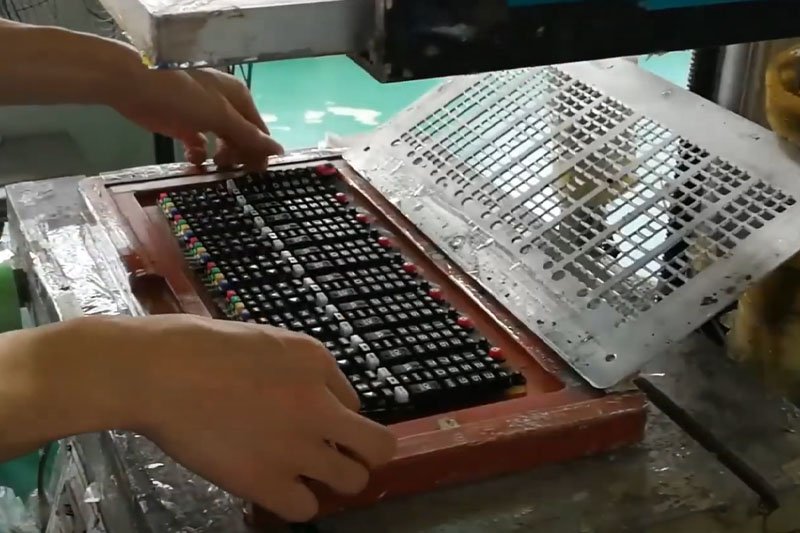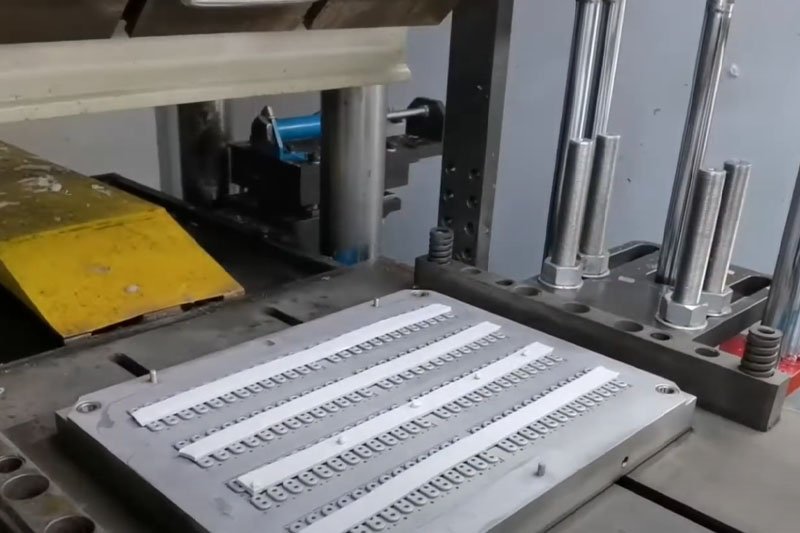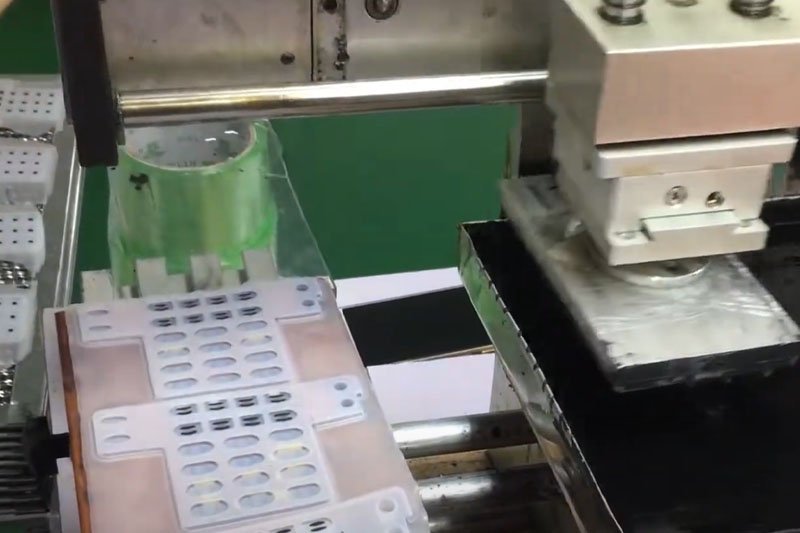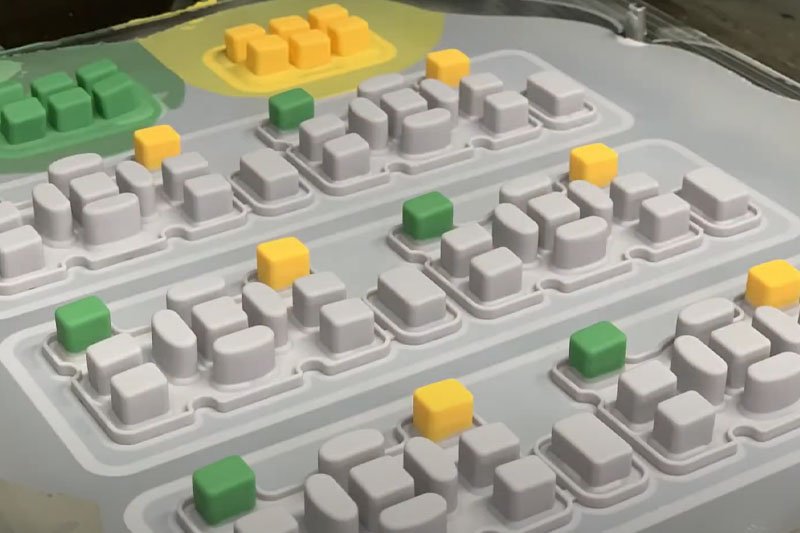Not every project needs millions of units—but every project needs the right production strategy. Choosing between low-volume and mass production matters.
Low-volume silicone keypad production offers flexibility and speed, while mass production lowers cost per unit and increases efficiency. The right choice depends on your timeline, budget, and market size.
I’ve helped startups prototype their first devices and guided established brands through full-scale production runs. Both paths have unique advantages—and different challenges. Let me show you how to choose the right one for your project.
What defines low-volume vs. mass production?
It starts with quantity—but also includes cost, tooling, and flexibility.
Low-volume production typically means fewer than 5,000 units. Mass production covers larger runs, usually 10,000 units or more, often involving full steel tooling and automation.

Here’s a general breakdown:
| Production Type | Unit Range | Tooling Type | Main Benefit |
|---|---|---|---|
| Prototype | 1–50 | Soft tooling / 3D | Fastest feedback |
| Low Volume | 50–5,000 | Soft steel/aluminum | Flexible, lower upfront cost |
| Mass Production | 10,000+ | Hardened steel | Lowest unit cost |
The line between “low” and “mass” depends on your product lifecycle, funding, and speed-to-market goals.
What are the benefits of low-volume silicone keypad production?
When time, flexibility, or budget is limited, small runs make a lot of sense.
Low-volume production offers quick turnaround, design agility, and lower tooling costs—perfect for testing markets, small batches, or pilot programs.

Here’s what makes it useful:
- Shorter lead times: You can get your keypads in as little as 7–10 days.
- Lower tooling costs: Aluminum or soft steel molds cost less to produce.
- Design flexibility: Easy to update or adjust the mold for design changes.
- No high MOQs (Minimum Order Quantities): Order what you need now, not what you hope to sell later.
| Advantage | Why It Matters |
|---|---|
| Quick Turnaround | Ideal for startups or revisions |
| Budget-Friendly Tooling | Reduces upfront investment |
| Design Iteration | Change webbing or layout easily |
| Reduced Inventory Risk | Avoids excess stock |
We use this method a lot when clients are launching a new product or need a limited edition run.
When does mass production make sense?
Once your design is final and demand is stable, it’s time to scale.
Mass production lowers the unit cost significantly and supports consistent quality at high volumes. It’s ideal for consumer products, OEM parts, and global rollouts.

With mass production, we use hardened steel molds that can handle hundreds of thousands of cycles. This approach includes:
- Automated processes for consistency
- Multi-cavity molds to produce multiple parts per cycle
- Strict quality control systems for large-scale output
- Volume pricing for better ROI
| Feature | Mass Production Benefit |
|---|---|
| Tool Life | Up to 1 million cycles |
| Unit Cost | Drops with higher volume |
| Cycle Time | Faster molding per unit |
| Quality Control | In-line and post-process inspections |
If you’re shipping thousands of devices per month, this is the way to go.
How does tooling differ between the two?
The tool is the foundation of every keypad. Its cost, life, and material vary based on the production scale.
Low-volume production uses soft or semi-hard molds; mass production uses hardened steel molds designed for long-term precision.
Low-Volume Tooling:
- Made from aluminum or P20 steel
- Tool life: 1,000–20,000 cycles
- Faster and cheaper to machine
- Easier to modify for design tweaks
Mass Production Tooling:
- Made from hardened H13 or S136 steel
- Tool life: 100,000+ cycles
- High durability and precision
- Supports automation and high output
| Tooling Feature | Low Volume | Mass Production |
|---|---|---|
| Material | Aluminum/P20 | H13/S136 Steel |
| Upfront Cost | Low | High |
| Lifespan | Short to Medium | Long |
| Flexibility | Easy to revise | Harder to adjust |
This is often the biggest investment decision for a keypad project.
What are the cost differences?
Costs vary across tooling, per-unit pricing, and quality control level.
Low-volume production has lower startup costs but higher unit costs. Mass production has high setup costs but low per-unit pricing.

Here’s how typical costs compare:
| Cost Type | Low Volume (Est.) | Mass Production (Est.) |
|---|---|---|
| Tooling | $800–$3,000 | $6,000–$20,000 |
| Per Unit (100 pcs) | $2.50–$6.00 | $0.20–$1.00 |
| Lead Time | 7–14 days | 20–30 days |
Low-volume is great when you’re validating the product or managing risk. Mass production is for when your product is selling steadily and needs to scale profitably.
What are the risks and limitations of each?
No method is perfect. Each has trade-offs depending on your phase.
Low volume offers flexibility but higher cost per unit. Mass production locks in design early, which may limit changes later.
Low Volume Risks:
- Not cost-efficient for large orders
- Shorter mold lifespan may increase long-term cost
- Less automation = more human error
Mass Production Risks:
- High tooling cost and longer lead time
- Limited room for design change once mold is finalized
- More complex logistics and QC processes
| Concern | Low Volume | Mass Production |
|---|---|---|
| Design Flexibility | High | Low |
| Cost per Unit | High | Low |
| Tooling Investment | Low | High |
| Production Speed | Medium | High |
We help clients balance these risks based on their stage of business and product maturity.
Conclusion
Choosing between low-volume and mass production depends on where you are in your product journey. Start with flexibility, scale with efficiency—and always build with the end user in mind.